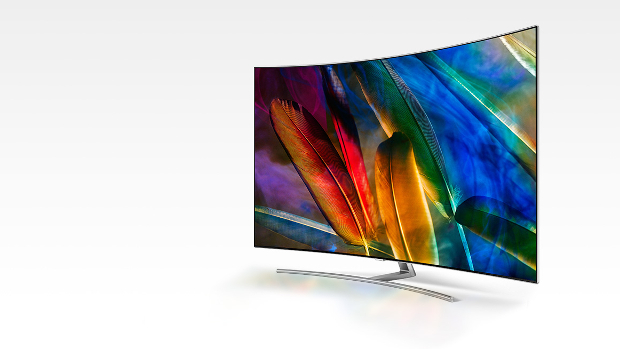Last year Samsung rebranded its quantum dot TVs as QLED. It has been developing quantum dot for a couple of years already and settled on the short acronym in 2017.
Some might say it went for QLED as it looks a lot like OLED but the two technologies are completely different. But which is better, and which should you buy?
That is a difficult question to answer succinctly, especially as Samsung is launching a new range of QLED TVs in 2018 which promise to fix the failings of last year’s models. And they certainly look impressive, even against the best OLED TVs.
“The Q, as you may have guessed, stands for Quantum dot. So, what is quantum dot?”
What is QLED and OLED?
Let us start with OLED. It stands for organic light emitting diode. OLED TVs are emissive which means that each pixel emits its own light. If a pixel is turned off, it emits no light and is therefore black. This is how OLED TVs can offer their “infinite” contrast ratios and why their blacks are so deep.
So-called LED TVs are actually LCD TVs. Years ago, the first flat screens to use LCD technology had fluorescent tubes behind them to provide the light. These consumed quite a lot of power and were replaced by smaller, cheaper and more energy-efficient LEDs.
Yet, the LCD technology which creates the picture you see has remained pretty much the same. The pixels do not emit any light, so LEDs are shone through either from behind or from the side so you can see the picture, a bit like shining a torch through a piece of paper. And this is why some TVs are called ‘LED backlit’ and ‘LED edge-lit’.
Most LCD TVs are edge-lit, and this includes last year’s Samsung QLED TVs. The Q, as you may have guessed, stands for Quantum dot. So, what is quantum dot?
It is a bit like OLED because the tiny molecules (the quantum dots) emit coloured light when light is shone on them. These quantum dots are contained in a film which forms just one of many layers which makes up a QLED TV. Others include a prism sheet which helps to improve viewing angles, diffuser sheets and polarisers.
In short, a QLED TV is an LCD TV with an added quantum dot layer that improves brightness and colour compared to ‘standard’ LED LCD TVs. The brightest current models can output around 1400 nits: the average LCD TV peaks at 300-400 nits. OLEDs, such as the LG C7, can hit just over 700 nits.
Both acronyms, OLED and QLED, are essentially umbrella terms which encompass variations in the technology. Not all OLED TVs are identical in their architecture and neither are QLED TVs, although QLED is more of a marketing term than OLED.
Here’s how Samsung explains it:
“Is QLED better than OLED?
Looking only at older TVs from 2017, the answer is no. One of the disadvantages of OLED is that it isn’t as bright as the brightest LED TVs. Manufacturers are chasing ever higher brightness so their TVs can produce more contrast and therefore a better image when playing HDR video, but another advantage of Samsung’s QLED tech is better colours.”
Samsung calls this ‘100% colour volume’, but it simply means more saturation (which means more vivid colours).
The problem with using edge lighting when ramping up the brightness to 1000 or even 2000 nits is that you end up with unwanted effects such as haloing. This is where the light from bright areas bleeds over into dark areas rather than there being a sharply defined edge.
A good example is a candle flame against a black background. This is not really a problem for OLED TVs, since each pixel creates its own light.
For LED TVs, especially edge-lit ones, it is hard to control the light which shines through each pixel. Local dimming is possible with edge-lit displays, but it is easier when you have a grid of LEDs behind the whole panel.
For 2018, at least some of Samsung’s QLED TVs will use backlighting and have hundreds of ‘zones’ which can be dimmed. They will also have extra layers to control and minimise internal light leakage, plus software support from an anti-blooming algorithm that will figure out where the bright areas are and dim that zone to help avoid haloing.
Which to buy?
This is the hard part. Having yet to test the 2018 models, it is hard to say which wins overall. And it is never only about image quality: price, software features, aesthetics and even the range of sizes will be deciding factors alongside image quality.
Both types of TV are still mega expensive, which means that you should view the TVs before you spend thousands to decide which you prefer.
If you are buying last year’s model, or even one from 2016, then check out our guide to the best TVs. Suffice to say that OLED is the tech to go for if you care most about outright image quality.
But with Samsung’s latest QLED models may well give the latest OLED TVs a good run for their money.
IDG News Service








Subscribers 0
Fans 0
Followers 0
Followers